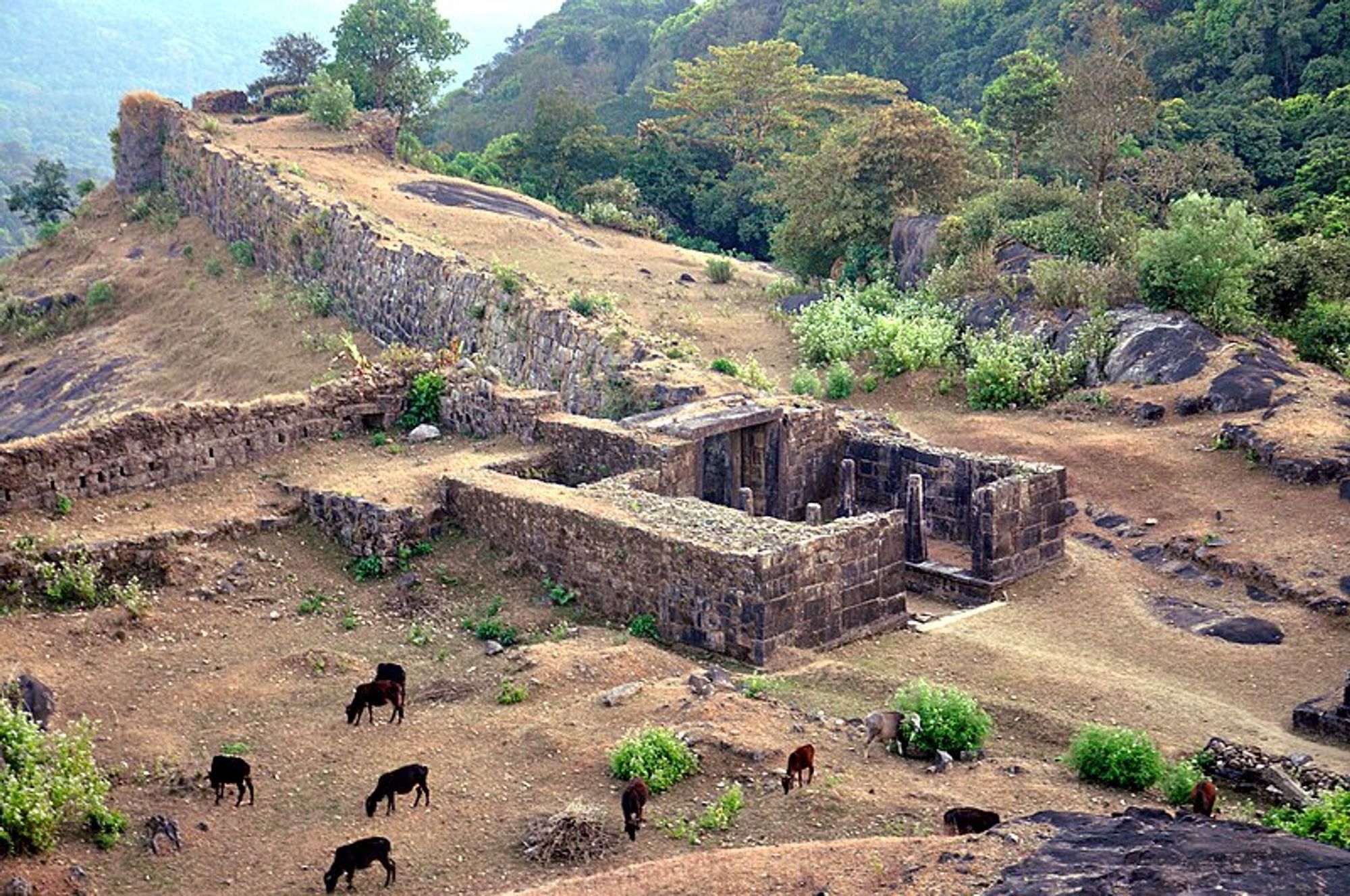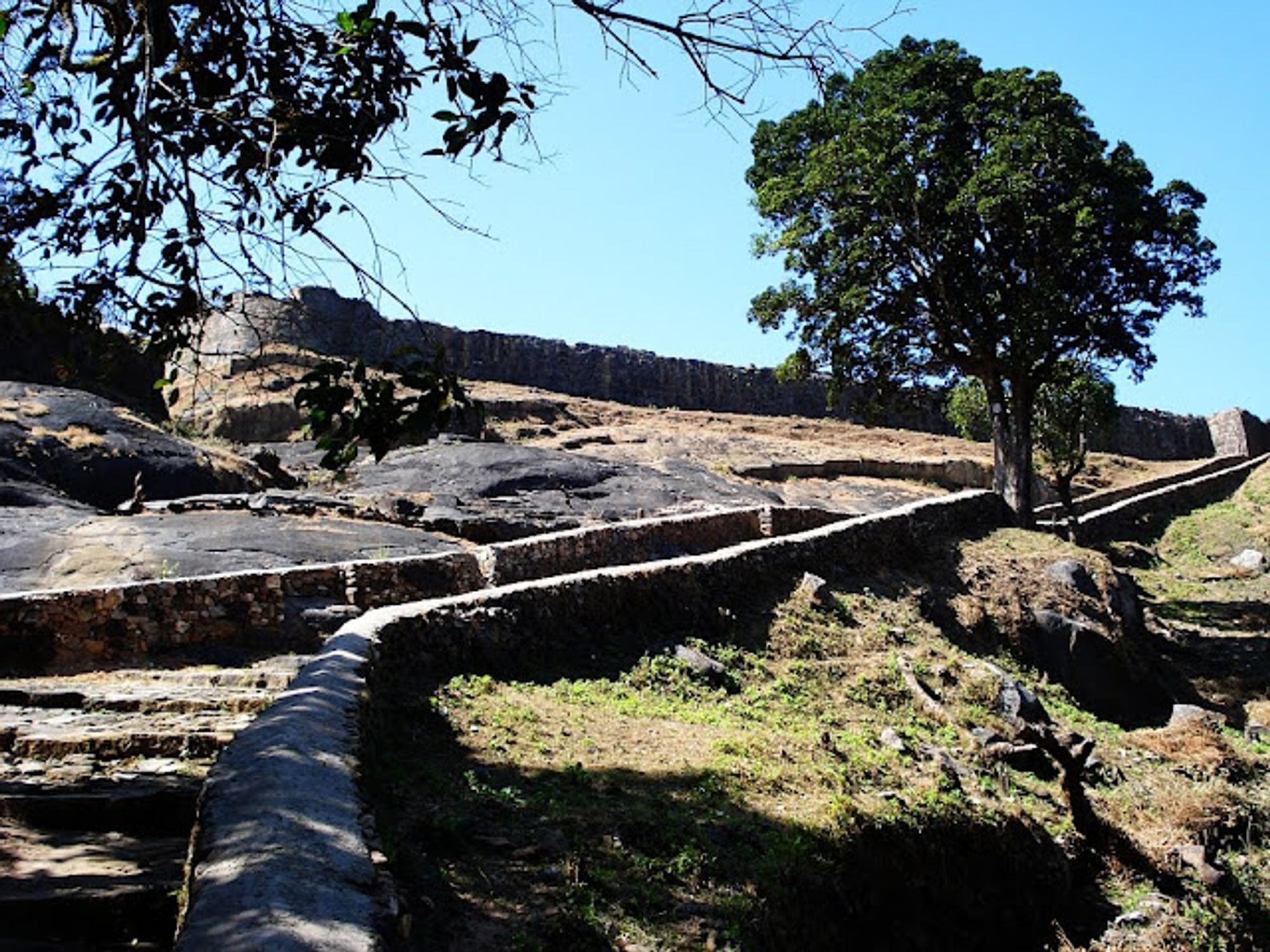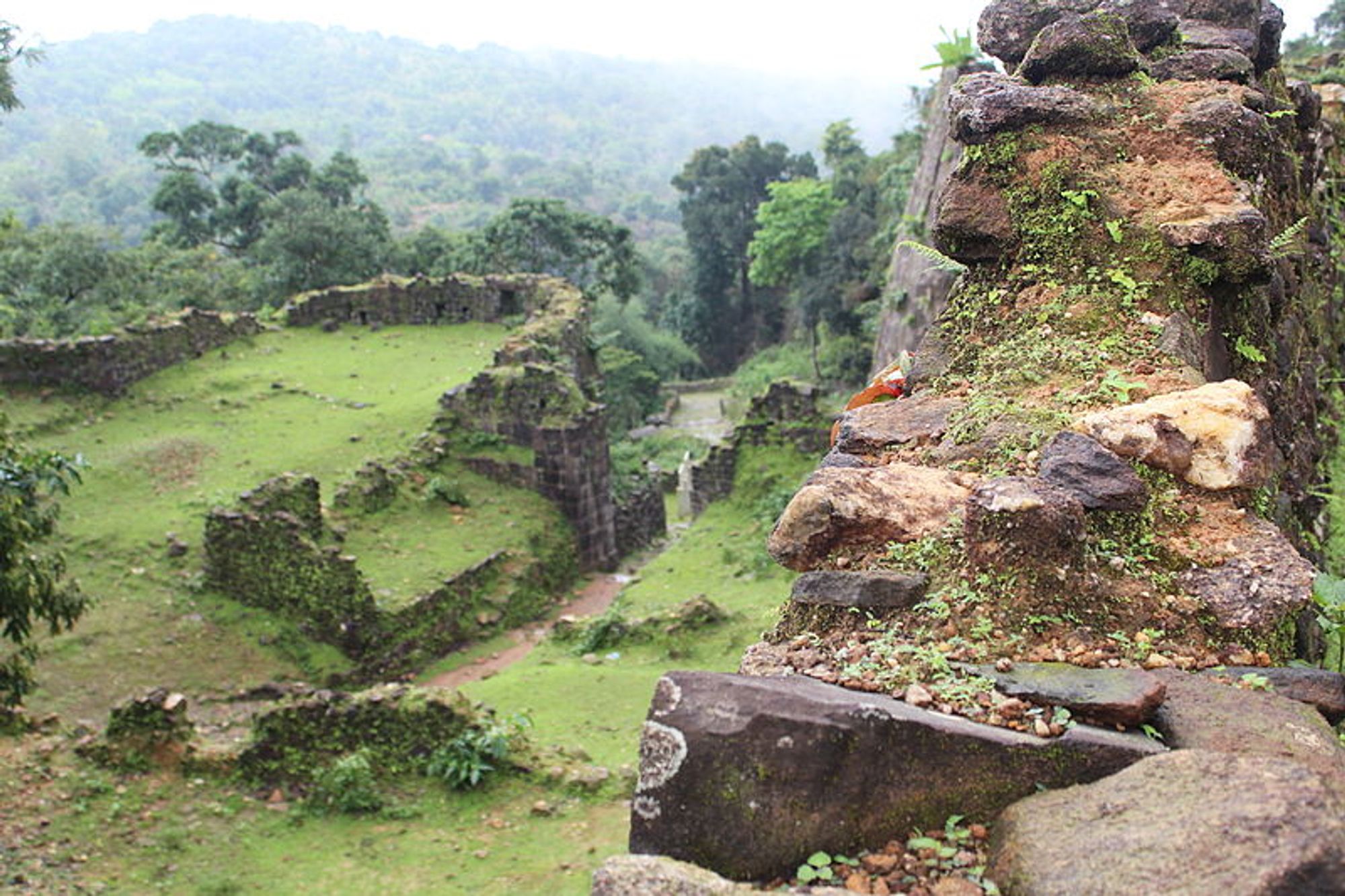Rajaram’s Escape and a Fort That Humbled the Mighty Mughals - I
Located in the Shivamogga district of Karnataka, about 18 kilometres from Thirthahalli, is a 9th-century fortress called Kaveladurga. This closely-guarded location of the hill fort remnants is hidden within the unassuming hamlet of Thirthahalli. Accessible by a bridle path, this erstwhile stronghold of the Keladi Nayakas lies in a state of neglect today. Oblivion now surrounds this once majestic fortress.

An aerial view I Source: Wikipedia Commons
The majestic fort of Kaveladurga, situated atop a hill at an elevation of 1541 meters, holds a history of nearly 1,100 years. It is accompanied by several intriguing myths and stories. According to Hindu legends, the area was renowned during the Krita Yuga and is known in Hindu mythology as Parashuram Kshetra. During the Treta Yuga, sages Agastya, Valmiki, and others dwelt here. The Pandavas also spent some time here during the Dvapara Yuga. The Skanda Purana mentions it by the names Kavya vana and Kapila durga.
Historically, the fort served as the fourth and final capital of the Keladi kingdom, constructed in the ninth century. Deep within the forest and surrounded by undulating hills, the fort provided excellent natural protection to its residents, posing a significant challenge to any aggressor. Over the years, many kings recognised its strategic location and sought to maintain control of this vital stronghold in the ghats.
In the 14th century, King Cheluvarangappa of Belagutti restored the fort. Later, it came under the ownership of the Tholaytama and Mundige brothers and became known as Kauledurga due to its proximity to Kauli village. For over sixty years, Kavaledurga served as a stronghold for the Nayakas of Keladi, who were feudatories under the Vijayanagara kings, eventually gaining independence with the fall of the Vijayanagara state in the 16th century.
In the sixteenth century, a Keladi ruler named Hiriya Venkatappa Nayaka acquired the fort, named it Bhuvanagiri Durga, and built seven battlements to guard it. Additionally, he constructed a palace and transformed it into an agrahara, complete with ponds, a Mahattina Matha, a Sringeri Matha, a treasury, a granary, and stables for horses and elephants. It was at this fort that Keladi Rani Chennamma was crowned. Rani Chennamma is renowned for repelling the great Mughal army and saving Shivaji's son Rajaram.
Kavaledurga played a crucial role in several battles during the reign of the Keladi Nayakas. In one instance, when the Bijapur army besieged the Nayaka capital of Bidanur (modern Nagara) in 1677, Queen Chennamma, who had just assumed the throne after her husband's murder, sought refuge in this fortified woodland castle. She recovered and organised an army that ultimately defeated the Bijapur Sultan's forces, reclaiming the Bidanur Fort.
The architectural marvel of this grand fort can hardly be captured in one account. The subsequent instalments of this series will further explore the remarkable achievements of this hill fortress. Stay tuned to learn more about this magnificent stronghold!
However, it was another event during Queen Chennamma's reign that forever linked her name with Kavaledurga. In 1689, when Sambhaji, the Maratha King and son of Chhatrapati Shivaji, was assassinated by the Mughal Emperor Aurangzeb, Prince Rajaram sought refuge in Rani Chennamma's court to safely travel to the fort at Gingee. Despite concerns about Mughal retaliation, Chennamma offered Rajaram her support. The Keladi army successfully held off the powerful Mughal forces for a considerable amount of time, securing Rajaram's escape to Gingee.
In the 18th century (1763), Hyder Ali conquered the fort and stationed his warriors, known as 'Kavalu Gaararu', to garrison it. This term is said to have inspired the modern name of the Kaveledurga Fort. Tipu Sultan later inherited the fort from Hyder Ali. Until 1882, Kavaledurga served as a taluka headquarters before being relocated to Thirthahalli.
The fort is a magnificent fusion of history, mythology, and natural beauty. It houses several temples dedicated to Virupaksha, Vijaya Vittala, Veerabhadra, Mallara, and Bhuvaneshwari. Additionally, a mosque constructed by Venkatappa Nayaka can be found within its premises.
The fort at Kavaledurga measures approximately 8 kilometres in circumference, with fort walls ranging from 30 to 40 feet in height, and watch towers strategically positioned. The village beneath the fort was surrounded by two lines of fortification, while the fort itself had five lines of fortification following the natural contour of the hillocks, resulting in seven layers of defenses, each with a gate. Each door is intricately crafted with massive granite blocks forming the rock wall defenses. Guard rooms flank either side of each gateway. The third gateway leads inside the precincts of the Kavaledurga Fort. Within the fort, one can find the ruins of a palace, a bath, guard quarters, and buildings for storing weapons. Historians also claim the presence of a Jaina temple and a mosque within the fort. Several deep wells, sizable ponds, and stone troves add to the fort's historical significance, including a freshwater pond atop the fort.

Fortifications at the Fort I Source: http://rakeshholla.blogspot.com/

Remains of the Fort I Source: Wikimedia Commons

Ruins of a palace and a T-shaped bath/tank I Source: http://rakeshholla.blogspot.com/


